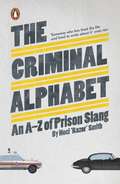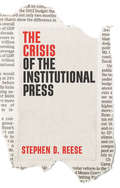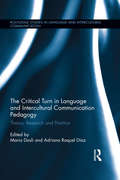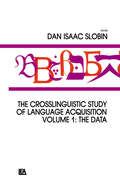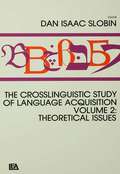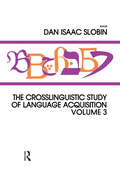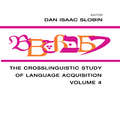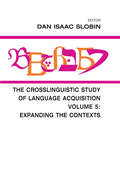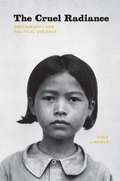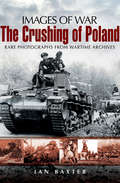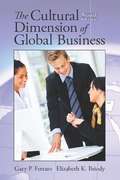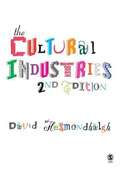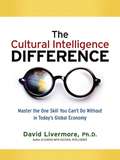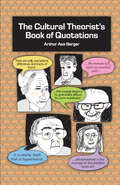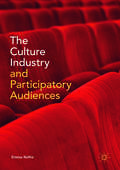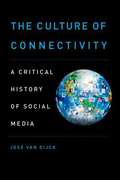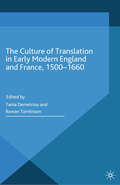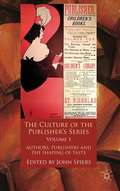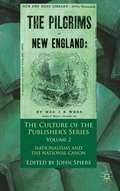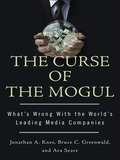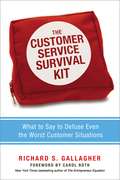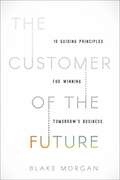- Table View
- List View
The Criminal Alphabet: An A-Z of Prison Slang
by Noel 'Razor' Smith'I have spent almost 33 of the last 53 years in and out of prison, but mainly in. I was a juvenile offender back in the mid 1970s and went on to become an adult prisoner in the 1980s and beyond. My shortest prison sentence was 7 days (for criminal damage) and my longest sentence was life (for bank robbery and possession of firearms). I have 58 criminal convictions for everything from attempted theft to armed robbery and prison escape, and I was a career criminal for most of my life. What I do not know about criminal and prison slang could be written on the back of a postage stamp and still leave room for The Lord's Prayer ...'From ex-professional bank robber and bestselling author Noel Smith, this is the most authoritative dictionary of criminal slang out there - and an unmissable journey, through words, into the heart of the criminal world.
The Crisis Manager: Facing Disasters, Conflicts, and Failures (Lea’s Communication Series)
by Otto LerbingerResponding to the era of crises in which we now live, The Crisis Manager offers wise counsel for anticipating and responding to crises as well as taking the steps required to reduce the impact of these events. Spotlighting the reality of crisis at levels ranging from local to global, author Otto Lerbinger helps readers understand the approaches and ways of thinking required for successful crisis management in today's world. As no organization or individual is immune from crisis, he guides managers to make good decisions under conditions of high uncertainty, and to consider the interests not only of stockholders but also of a wide variety of stakeholders. With a focus on the threat of crises to an organization's most valuable asset - its reputation - The Crisis Manager covers: Preparation for crisis, including crisis communication planning Physical crises - natural, biological, and technological "Human climate" crises, stemming from targeted attacks on an organization's policies, actions, or physical holdings Crises due to management failure, including mismanagement, skewed values, deception, and misconduct New to this second edition are the use of social media in crisis management, and chapters on image restoration strategies and crises stemming from mismanagement, as well as a comprehensive updating of the entire work. Real-world case studies provide examples of what worked and what did not work, and the reasons why. Written for present and future crisis managers in all types of businesses and organizations, this resource will be required reading for students in public relations, business, and management, as it prepares them for their crucial roles as decision makers.
The Crisis of Journalism Reconsidered
by Jeffrey C. Alexander Alexander, Jeffrey C. and Breese, Elizabeth Butler and Luengo, María Elizabeth Butler Breese María LuengoThis collection of original essays brings a dramatically different perspective to bear on the contemporary 'crisis of journalism'. Rather than seeing technological and economic change as the primary causes of current anxieties, The Crisis of Journalism Reconsidered draws attention to the role played by the cultural commitments of journalism itself. Linking these professional ethics to the democratic aspirations of the broader societies in which journalists ply their craft, it examines how the new technologies are being shaped to sustain value commitments rather than undermining them. Recent technological change and the economic upheaval it has produced are coded by social meanings. It is this cultural framework that actually transforms these 'objective' changes into a crisis. The book argues that cultural codes not only trigger sharp anxiety about technological and economic changes, but provide pathways to control them, so that the democratic practices of independent journalism can be sustained in new forms.
The Crisis of the Institutional Press
by Stephen D. ReeseAs polarized factions in society pull apart from economic dislocation, tribalism, and fear, and as strident attacks on the press make its survival more precarious, the need for an institutionally organized forum in civic life has become increasingly important. Populist challenges amplified by a counter-institutional media system have contributed to the long-term decline in journalistic authority, exploiting a post-truth mentality that strikes at its very core. In this timely book, Stephen Reese considers these threats through a new conception of the ‘hybrid institution’: an idea that extends beyond the traditional newsroom, and distributes across multiple platforms, national boundaries, and social actors. What is it about the institutional press that we value, and around what normative standards could a hybrid institution emerge? Addressing these questions, Reese highlights how this is no time to be passive but rather to articulate and defend greater aspirations. The institutional press matters more than ever: a reality that must be communicated to a public that depends on it. The Crisis of the Institutional Press is an essential resource for students and scholars of journalism, media and communication.
The Critical Turn in Language and Intercultural Communication Pedagogy: Theory, Research and Practice (Routledge Studies in Language and Intercultural Communication)
by Adriana Raquel Díaz Maria DasliThis edited research volume explores the development of what can be described as the ‘critical turn’ in intercultural communication pedagogy, with a particular focus on modern/foreign language education. The main aim is to trace the realisations of this critical turn against a background of unequal power relations, and to illuminate the role that radical culture educators can play in the making of a more democratic and egalitarian social order. The volume takes as a starting point the idea that criticality draws on a number of intellectual traditions, which do not always focus on social and political critique, and argues that because ideological hegemony impacts on the meanings that people create and share, intercultural communication pedagogy ought to locate itself within wider socio-political contexts. With reference points drawn from critical and transnational social theory, critical pedagogy and intercultural theory, contributors to this volume provide readers with powerful ways that show how this can be achieved, and together assess the impact that their understanding of criticality can make on modern/foreign language education. The volume is divided into three major parts, namely: ‘theorising critically’, ‘researching critically’ and ‘teaching critically’.
The Crosslinguistic Study of Language Acquisition Volume 1: the Data
by Dan Isaac SlobinAn essential handbook for professionals and advanced students in the field. Volume 1 contains comprehensive studies on the acquisition of 15 different languages (from ASL to Samoan) -- written by top researchers on each topic. Volume 2 concentrates on theoretical issues, emphasizing current linguistic and psycholinguistic research. Unique in its approach toward individual languages and in its comparative perspective, this book is a hallmark of a rapidly growing area of interdisciplinary, international research.
The Crosslinguistic Study of Language Acquisition: Volume 2: Theoretical Issues
by Dan Isaac SlobinSee Volume I (0-89859-367-0) for full description and TOC.
The Crosslinguistic Study of Language Acquisition: Volume 3
by Dan Isaac SlobinExtending the tradition of this series, which has become a standard reference work in language acquisition, this volume contains chapters on seven more languages, including a section on ergative languages. Languages in this volume include: Georgian; Greenlandic; K'iche Mayan; Warlpiri; Mandarin; Scandinavian and Sesotho.
The Crosslinguistic Study of Language Acquisition: Volume 4
by Dan Isaac SlobinContinuing the tradition of this series, which has become a standard reference work in language acquisition, Volume 4 contains chapters on three additional languages/language groups--Finnish, Greek, and Korean. The chapters are selective, critical reviews rather than exhaustive summaries of the course of development of each language. Authors approach the language in question as a case study in a potential crosslinguistic typology of acquisitional problems, considering those data which contribute to issues of general theoretical concern in developmental psycholinguistics and linguistic theory. Each chapter, therefore, provides the following: * Grammatical Sketch of Language. Brief grammatical sketch of the language or language group, presenting those linguistic facts which are relevant to the developmental analysis. * Sources of Evidence. Summary of basic sources of evidence, characterizing methods of gathering data, and listing key references. * Overall Course of Development. Brief summary of the overall course of development in the language or language group, giving an idea of the general problems posed to the child in acquiring a language of this type, summarizing typical errors, domains of relatively error-free acquisition, and the timing of acquisition--areas of the grammar that show relatively precocious or delayed development in crosslinguistic perspective. * Data. Specific developmental aspects of the language examined in depth, depending on each individual language and available acquisition data. * Conclusions. An interpretive summary of theoretical points raised above, attending to general principles of language development and linguistic organization suggested by the study of a language of this type, plus comparisons with development of other languages.
The Crosslinguistic Study of Language Acquisition: Volume 5: Expanding the Contexts
by Dan Isaac SlobinIn this final volume in the series, the contributors attempt to "expand the contexts" in which child language has been examined crosslinguistically. The chapters build on themes that have been touched on, anticipated, and promised in earlier volumes in the series. The study of child language has been situated in the disciplines of psychology and linguistics, and has been most responsive to dominant issues in those fields such as nativism and learning, comprehension and production, errors, input, and universals of morphology and syntax. The context has primarily been that of the individual child, interacting with a parent, and deciphering the linguistic code. The code has been generally treated in these volumes as a system of morphology and syntax, with little attention to phonology and prosody. Attention has been paid occasionally to the facts that the child is acquiring language in a sociocultural setting and that language is used in contexts of semantic and pragmatic communication. In addition, there has been a degree of attention paid to the interactions between language and cognition in the process of development. As for individual differences between children, they have been discussed in those studies where they could not be avoided, but such variation has rarely been the focus of systematic attention. Differences between individual languages have been of great interest, but these differences have not often been placed in a framework of systematic typological variation. And although languages and their grammars change over time, the focus of attention on the individual child learner has generally led to neglect of explanatory principles that are best found on the level of linguistic diachrony, rather than the level of innate ideas or patterns of learning and cognition in the individual child. The chapter authors seek to explore these neglected contexts in more depth.
The Cruel Radiance: Photography and Political Violence
by Susie LinfieldIn The Cruel Radiance, Susie Linfield challenges the idea that photographs of political violence exploit their subjects and pander to the voyeuristic tendencies of their viewers. Instead she argues passionately that looking at such images—and learning to see the people in them—is an ethically and politically necessary act that connects us to our modern history of violence and probes the human capacity for cruelty. Grappling with critics from Walter Benjamin and Bertolt Brecht to Susan Sontag and the postmoderns—and analyzing photographs from such events as the Holocaust, China’s Cultural Revolution, and recent terrorist acts—Linfield explores the complex connection between photojournalism and the rise of human rights ideals. In the book’s concluding section, she examines the indispensable work of Robert Capa, James Nachtwey, and Gilles Peress and asks how photography should respond to the increasingly nihilistic trajectory of modern warfare.A bracing and unsettling book, The Cruel Radiance convincingly demonstrates that if we hope to alleviate political violence, we must first truly understand it—and to do that, we must begin to look.
The Crushing of Poland: Rare Photographs from Wartime Archives (Images of War)
by Ian Baxter"Hitlers decision to invade Poland in August 1939 triggered the start of the Second World War. It was also the first demonstration of Blitzkrieg tactics the ruthless use of armor, mobile infantry and air support. The brave Polish army, inadequately equipped and inferior in numbers, was overwhelmed by this awesome display of military power as well as being taken by surprise. Official German photographers accompanied the triumphant Nazi forces on their victorious advance which first seized the key part of Danzig and then Warsaw, all within one month. The Crushing of Poland captures the drama and raw aggression of the Campaign in photographs and full captions."
The Cultural Context of Emotion
by Karl G. HeiderBased on the author's second stage of research on emotions of the matrilineal Moslem Minangkabau of West Sumatra, Indonesia, this book is a continuation of Heider's groundbreaking 1991 book, Landscapes of Emotion . This work demonstrates how situating emotion at the center of an investigation is a powerful ethnographic tool.
The Cultural Dimension of Global Business 7th Edition
by Gary P. Ferraro Elizabeth K. BriodyThe Cultural Dimension of Global Business provides a foundation for understanding the impact of culture on global business and global business on culture.
The Cultural Industries
by David Hesmondhalgh'The first edition of The Cultural Industries moved us irrevocably past the tired debates between political economy and cultural studies approaches. This second edition takes on new and vital targets, for example claims that the Internet is replacing television in everyday media consumption. . . . In the process, Hesmondhalgh provides us with an essential toolkit for making critical sense of the digital media age, and our places within it' - Nick Couldry, Goldsmiths College, University Of London 'This book sets a valuable standard for communication studies. Hesmondhalgh integrates cultural research with political economy, organizational sociology with public communication policy studies, global with comparative analysis, and intellectual property law with technology changes. I've successfully taught graduate and undergraduate courses in the USA and France using the first edition, and this one is better still' - John D. H. Downing, Global Media Research Centre, Southern Illinois University Praise for the first edition: 'This lucid, careful and sophisticated book orders the entire field, for the US as well as Europe, and at one stroke becomes the state of the art, the standard' - Todd Gitlin, Columbia University, USA This book is a powerful antidote to journalistic hype about change in the cultural industries. Significantly expanding, updating and revising an acclaimed first edition published in 2002, it · analyses how, why and in what ways cultural production has changed since the 1980s · guides the reader through existing approaches · scrutinises facts and debates about the role of culture and creativity in modern societies · provides new material on copyright, cultural policy, celebrity power, the digital distribution of music and many other issues Like its predecessor, this exciting new edition of The Cultural Industries places transformation in the cultural industries in long-term political, economic and cultural context. In doing so, Hesmondhalgh offers a distinctive critical approach to cultural production, drawing on political economy perspectives, but also on cultural studies, sociology and social theory.
The Cultural Intelligence Difference: Master the One Skill You Can't Do Without in Today's Global Economy
by David LivermoreMost people know that some basic cultural sensitivity is important. But few have developed the deep cultural intelligence (CQ) required to really thrive in our multicultural workplaces and globalized world. Now everybody can tap into the power of CQ to enhance their skills and capabilities, from managing multi cultural teams and serving a diverse customer base to negotiating with international suppliers and opening offshore markets. The Cultural Intelligence Differencegives readers: * A scientifically validated instrument for measuring their personal CQ score * Customized strategies for improving interactions with people from diverse cultures * New findings on the bottom-line benefits of cultural intelligence * Examples of major organizations that use CQ to achieve success A high CQ points to more than just cultural sensitivity. It is linked to improved decision making, negotiation, networking, and leadership skills - and provides a crucial advantage in a crowded job market. The Cultural Intelligence Differencedelivers a powerful tool for navigating today's work world with finesse - and success.
The Cultural Theorist's Book of Quotations
by Arthur Asa BergerWhere did you see it—that perfect quotation from Foucault or Kristeva to use in your upcoming keynote address? Stop the search and pick up Arthur Berger’s handy book of over 300 concise quotations from the vast literature in cultural theory. This compilation will give you just the right snappy quote to help prepare that lecture, write that paper, fill that Power Point, or drop a few bon mots at a university reception. Organized by theoretical model (semiotic, Marxist, psychoanalytic, gender, postmodernist), Berger pulls together the most succinct, meaningful passages of the key theorists of our time for those wanting to distill cultural theory to its essence.
The Culture Industry and Participatory Audiences
by Emma KeltieThis project offers a new critique of participatory media practices. While the concept of participatory culture is often theorised as embodying the possibility of a potentially utopian future of media engagement and participation, this book argues that the culture industry, as it adapts and changes, provides moments of authorised participation that play out under the dominance of the industry. Through a critical recounting of the experience of creating a web series in Australia (with a global audience) outside of the culture industry structures, this book argues participation can take place. It is these platforms that become spaces of controlled access to participatory cultural practices.
The Culture Of Connectivity: A Critical History Of Social Media
by Jose Van DijckSocial media has come to deeply penetrate our lives: Facebook, YouTube, Twitter and many other platforms define many of our daily habits of communication and creative production. The Culture of Connectivity studies the rise of social media in the first decade of the twenty-first century up until 2012, providing both a historical and a critical analysis of the emergence of major platforms in the context of a rapidly changing ecosystem of connective media. Such history is needed to understand how these media have come to profoundly affect our experience of online sociality. The first stage of their development shows a fundamental shift. While most sites started out as amateur-driven community platforms, half a decade later they have turned into large corporations that do not just facilitate user connectedness, but have become global information and data mining companies extracting and exploiting user connectivity. Author and media scholar Jose van Dijck offers an analytical prism to examine techno-cultural as well as socio-economic aspects of this transformation. She dissects five major platforms: Facebook, Twitter, Flickr, YouTube, and Wikipedia. Each of these microsystems occupies a distinct position in the larger ecology of connective media, and yet, their underlying mechanisms for coding interfaces, steering users, and filtering content rely on shared ideological principles. At the level of management and organization, we can also observe striking similarities between these platforms' shifting ownership status, governance strategies, and business models. Reconstructing the premises on which these platforms are built, this study highlights how norms for online interaction and communication gradually changed. "Sharing," "friending," "liking," "following," "trending," and "favoriting" have come to denote online practices imbued with specific technological and economic meanings. This process of normalization, the author argues, is part of a larger political and ideological battle over information control in an online world where everything is bound to become social. Crossing lines of technological, historical, sociological, and cultural inquiry, The Culture of Connectivity will reshape the way we think about interpersonal connection in the digital age.
The Culture of Translation in Early Modern England and France, 1500–1660
by Tania Demetriou Rowan TomlinsonThis book explores modalities and cultural interventions of translation in the early modern period, focusing on the shared parameters of these two translation cultures. Translation emerges as a powerful tool for thinking about community and citizenship, literary tradition and the classical past, certitude and doubt, language and the imagination.
The Culture of the Publisher’s Series, Volume One
by John SpiersThis volume focuses on the publisher's series as a cultural formation - a material artefact and component of cultural hierarchies. Contributors engage with archival research, cultural theory, literary and bibliometric analysis (amongst a range of other approaches) to contextualize the publisher's series in terms of its cultural and economic work.
The Culture of the Publisher’s Series, Volume Two
by John SpiersThis volume explores problems concerning the series, national development and the national canon in a range of countries and their international book-trade relationships. Studies focus on issues such as the fabrication of a national canon, and on the book in war-time, the evolution of Catholic literature, imperial traditions and colonial libraries.
The Curse of the Mogul
by Ava Seave Bruce C. Greenwald Jonathan A. KneeIf Rupert Murdoch and Sumner Redstone are so smart, why are their stocks long-term losers? We live in the age of big Media, with the celebrity moguls telling us that "content is king." But for all the excitement, glamour, drama, and publicity they produce, why can't these moguls and their companies manage to deliver better returns than you'd get from closing your eyes and throwing a dart? The Curse of the Mogul lays bare the inexcusable financial performance beneath big Media's false veneer of power. By rigorously examining individual media businesses, the authors reveal the difference between judging a company by how many times its CEO is seen in SunValley and by whether it generates consistently superior profits. The book is packed with enough sharp-edged data to bring the most high-flying, hot-air filled mogul balloon crashing down to earth.
The Customer Service Survival Kit: What to Say to Defuse Even the Worst Customer Situations
by Richard S. GallagherThe worst customer situations demand more of front-line employees than good intentions and the right attitude. These kinds of issues can send seasoned service professionals into red alert, and require the communication skills of a crisis counselor. The Customer Service Survival Kit explains how to use the right words toturn volatile scenarios into calm and productive customer encounters. Anyone can learn this delicate art with the book's blend of clear techniques, lessons from behavioral science, case studies, situation-specific advice, and practice exercises. Readers will discover: * The power of leaning into criticism * Trigger phrases that can make bad situations worse * The secret to helping people feel deeply heard in a crisis * How to use the divide-and-conquer approach to safely deliver bad news * Indispensable problem-solving tools * How to become immune to intimidation * How to wrap up transactions so that customers are happy * And more! Best yet, learning to handle worst-case scenarios has the spillover effect of boosting the skills and confidence needed to deal effectively with ANY customer - the key to radical improvements in every organization.
The Customer of the Future: 10 Guiding Principles for Winning Tomorrow's Business
by Blake MorganTomorrow’s customers need to be targeted today!With emerging technology transforming customer expectations, it’s more important than ever to keep a laser focus on the experience companies provide their customers.In The Customer of the Future, customer experience futurist Blake Morgan outlines ten easy-to-follow customer experience guidelines that integrate emerging technologies with effective strategies to combat disconnected processes, silo mentalities, and a lack of buyer perspective.Tomorrow’s customers will insist on experiences that make their lives significantly easier and better. Companies will win their business not by just proclaiming that customer experience is a priority but by embedding a customer focus into every aspect of their operations. They’ll understand how emerging technologies like artificial intelligence (AI), automation, and analytics are changing the game and craft a strategy to integrate them into their products and processes.The Customer of the Future explains how today’s customers are already demanding frictionless, personalized, on-demand experiences from their products and services, and companies that don’t adapt to these new expectations won’t last. This book prepares your organization for these increasing demands by helping you do the following:Learn the ten defining strategies for a customer experience–focused company.Implement new techniques to shift the entire company from being product-focused to being customer-focused.Gain insights through case studies and examples on how the world’s most innovative companies are offering new and compelling customer experiences.Craft a leadership development and culture plan to create lasting change at your organization.
